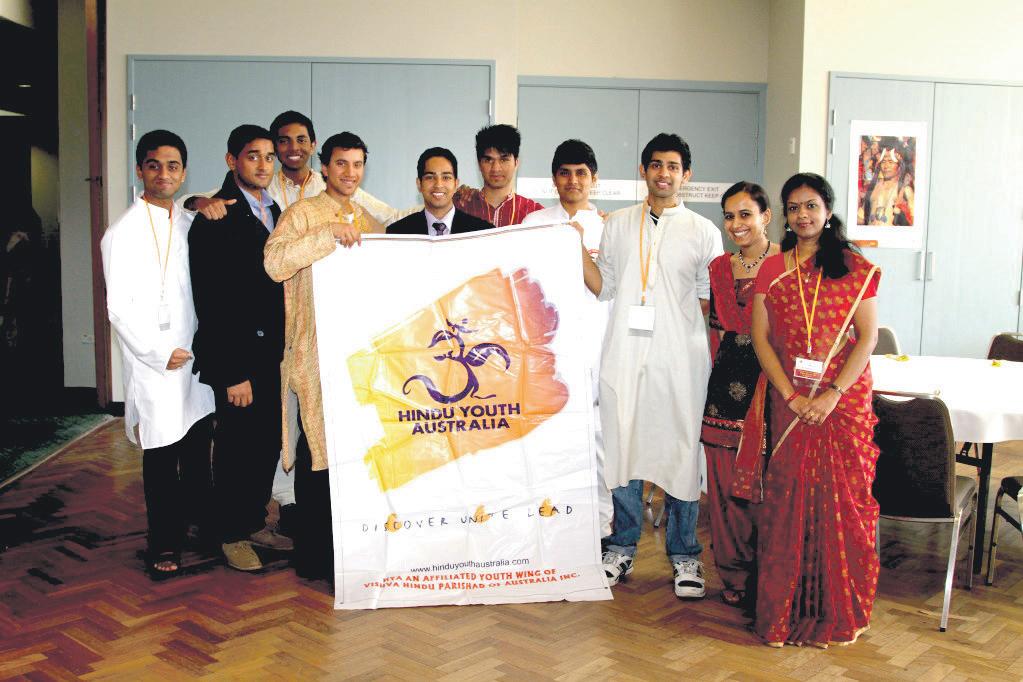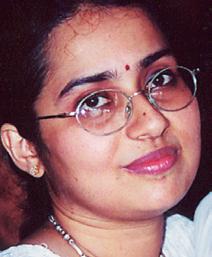
3 minute read
Applicable Hindu Dharma HYA conference aids greater understanding of the ethics and fundamentals of the religion
from 2012-08 Sydney (2)
by Indian Link
BY USHA RAMANUJAM ARVIND
Knowledge is powerful; knowledge is limitless; but more importantly, it is freely accessible, bound by neither patents nor property rights - that is the basis of sanatana dharma or the Hindu way of life.
A dynamic group of young individuals in Australia have made it their mission to pass on the age-old wisdom contained in our sacred texts and in the process, reconnect modern youth with their ancient heritage.
‘Unite, discover, lead’ is the motto of Hindu Youth Australia (HYA), founded three years ago to provide a forum for like-minded peers. Since then they have run many fruitful programs catering to the diverse needs of their target group, the flagship event being the annual youth conference.
Held at Rooty Hills Novotel, HYA’s conference this year was aptly titled ‘Find the Dynamic You’.
“Our focus for 2012 was on workshops, as public education is one of our main objectives,” NSW HYA coordinator Krishna Ramarathinam told Indian Link As Krishna aptly put it, at the end of the day each and every participant took home with them a DIY kit of ‘applicable Hindu dharma’.
“Our aim was to show how the knowledge and values of Hindu dharma can enhance our daily lives,” he added. Inspirational talks, interactive learning and thought provoking discussions were some of the items of the day’s agenda. While the program was primarily aimed at a younger audience, it attracted people from the wider community as well.
Opening the conference, keynote speaker Arjun Nidigallu spoke persuasively about Hindu renaissance. “Our culture is like the vast ocean and the blue skies. We do not know how much there is and how to tap its infinite resources,” he commented.
Demonstrating the importance of culture in shaping one’s identity, Arjun elaborated on core Hindu philosophy of Sat-ChitAnanda (existence-consciousnessblissfulness). His clever choice of metaphors and analogies struck an instant chord with his young audience. Existentialist themes like why, how and what, introduced by Arjun formed the framework of discussions, taken up by other speakers over the course of the workshop.
Kailash Satyanarayan gave a passionate presentation on social service. Quoting Mahatma Gandhi (“Be the change you wish to see in the world”) and Michael Jackson (Man in the mirror), he urged the delegates to be active in the community.
Guest speakers included Sanskrit scholar Dr Jennifer Cover, Chinese Australian Liberal MP Geoff Lee, and ISKCON leader Viraja Krishna Dasa.
Dr Cover, who has translated Narahari’s Bodhisara, explained the meaning of ‘dynamic you’ (Saatvika Tvam Bodha). “In the midst of hectic everyday activity, stated.
Mr Lee urged second generation Hindu Australians to embrace their culture “as it provides a great roadmap for strong relationships that strengthens the national fabric”.
Br Krishna Dasaji spoke of selfgratification and self-realisation, and the importance of making meaningful contributions to enrich social structure.
Youth activists Aravind Srinivasan and Sushyanth Subramaniam explained the significance of pooja and temples, both integral to Hindu religion and culture.
After a hearty vegetarian meal prepared by the resident chef at the Novotel, the delegates participated in hands-on mentoring sessions.
Adelaide-based Yogicharya Devidasan Giriji gave a brief introduction to the simplest but most potent Hindu mantra –
Hindu traditions in the west today, with proven non-invasive therapeutic qualities. The acharya briefly explored its undervalued, but far-reaching potential.
Actuary student Anusha

Niddigallu’s sneak peek into Vedic Mathematics, popularised in the early 20th century by Bharathi Krishna Thirtha Maharaj, certainly had young minds alert and engaged. Consisting primarily of sixteen sutras and its corollaries, they provide useful calculation strategies particularly in arithmetic and algebra. Delegates were quick to learn sutras like Nikhilam Navatascharamam Dashatam and Ekadhikena Purvena.
Vandana Anand briefed the audience on fundamentals of public speaking, an all important life skill, before engaging them in a brainstorming session on various aspects of the Hindu way of life and its relevance in modern contexts.
Likewise, Krishna Ramaratinam’s informative presentation, “Why Sanskrit?” spoke volumes on why this deva bhasha is undergoing a revival today.
The session concluded with a public forum seeking new and proactive directions for growth. Among the contentious issues discussed were integration without loss of identity, bullying and racism, relevance of God, role of parents, as well as spirituality in modern context. Delegates came up with fresh ideas and novel perspectives, which HYA’s core committee hope not only to take on board, but implement over the current year.
The goal for 2013 is to be more inclusive and throw the conference open to mainstream participation. Having been initiated into the new pathway, the youngsters are well and truly now part of the Vasudeva Kutumbakam and will hopefully make the changes they wish to see in the world.
















